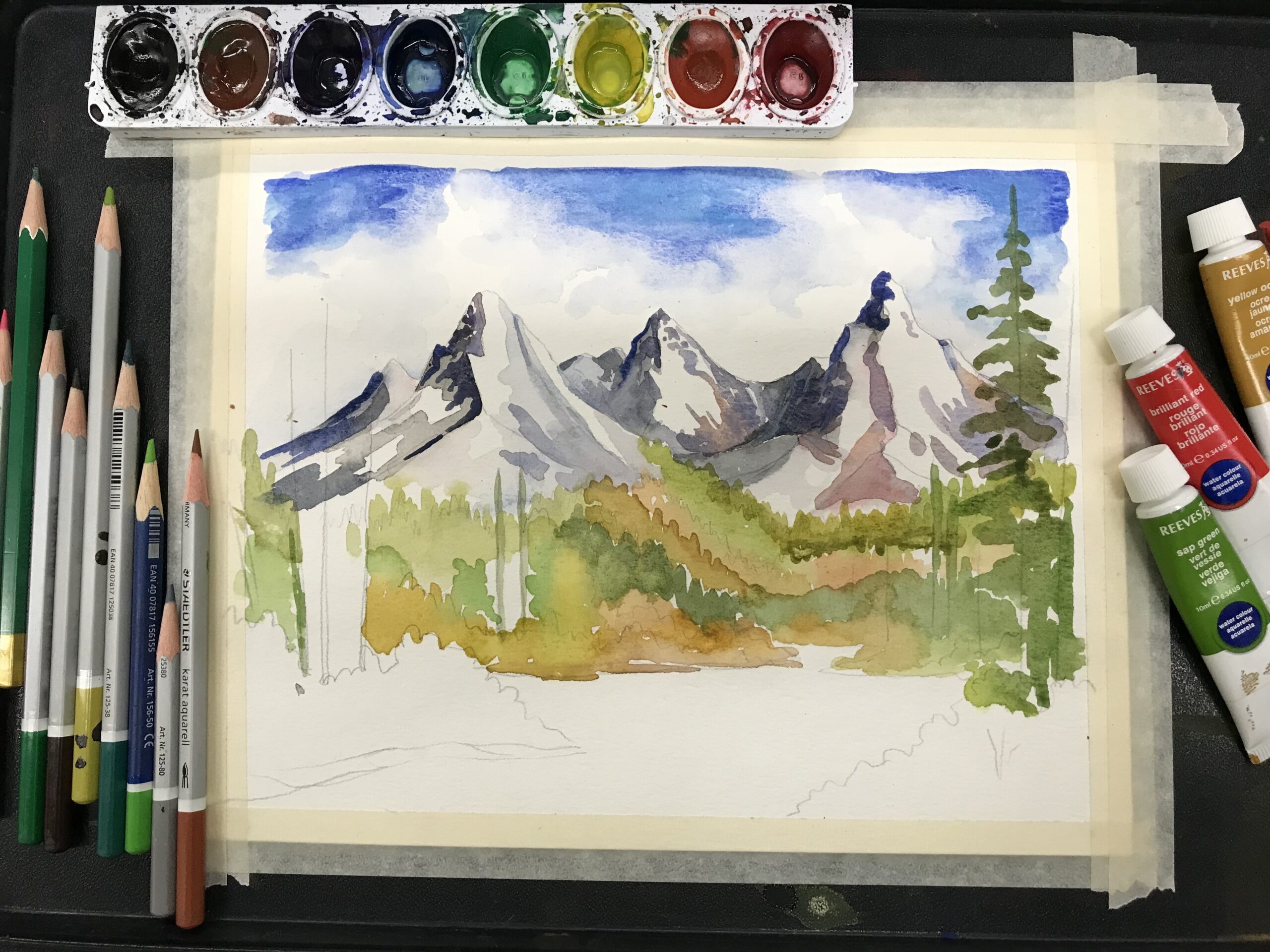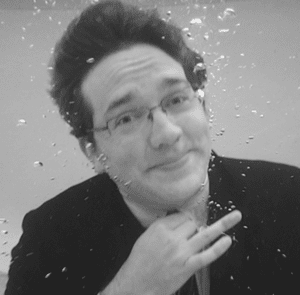I hate teaching watercolor. I want to love it, but I just can’t get there. My biggest frustration is that I feel like I just can’t teach it as well as I want to. I don’t love the medium enough to be excited about it, and I don’t have the right ideas to make it exciting for my kids.
Everyone teaches the same exercises with watercolor. You divide your paper into little squares; you do the wash, the resist, the dry brush, and everything else that goes with it. But then what?
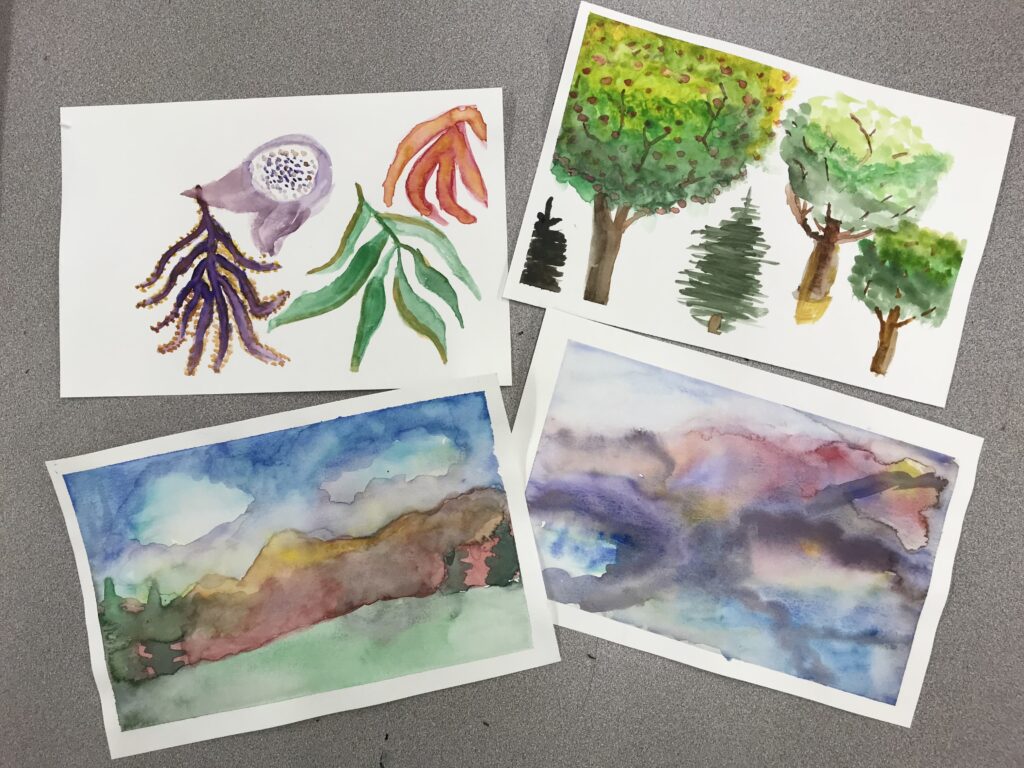
What comes after those exercises? How do we transfer what kids learn from those exercises into actual paintings? If we manage to do that right, how do we make those paintings personal and meaningful?
And above all else: how do you get kids excited about working with a material you don’t enjoy working with yourself?
Embracing the growth mindset we all love so much, I decided to find out what I was missing when it comes to working with watercolors. I reached out to Andrea Slusarski, awesome Colorado art teacher and plein air painter extraordinaire, to see if she could convince me to love this medium as much as she does. We had a great conversation on Art Ed Radio, and though I’m not all the way sold, she did have some tips that may have me looking at teaching watercolor in a new way.
Below are 5 ideas that can take your watercolor teaching to the next level.
1. Use watercolor to get kids out of their comfort zones.
“To paint and engage with watercolors – to me – is this immediate feeling of letting go and engaging,” Slusarski said. “Especially with my sketchbooks, the medium brings me to the moment and present where I am creating.” It may seem difficult for kids to let go, especially if they are always focused on creating their best end product. But it’s an incredible way for them to approach artmaking; great things come when you step outside of where you’re comfortable. If they can let go, and create watercolors without worrying about mistakes, you never know when they may stumble onto something spectacular.
If you’re also feeling unsure about where to start with teaching watercolor, be sure to take a peek at the AOE course Studio: Painting – Watercolor. You’ll gain a solid understanding of the media while trying out exciting techniques for yourself. You can see more, including a sample assignment, right here.
2. Show the kids you’re learning, too.
Every year, I try to get better at a particular medium–it’s always one of my summer goals. Andrea was on board with this goal and offered the following advice: “Connect [watercolor] to something you’re best at. This way you can still feel confident as you explore new territory. Or take it easy and let your students know you’re also learning. Learning alongside your students is a fun experience, and it models to them how learning never stops.”
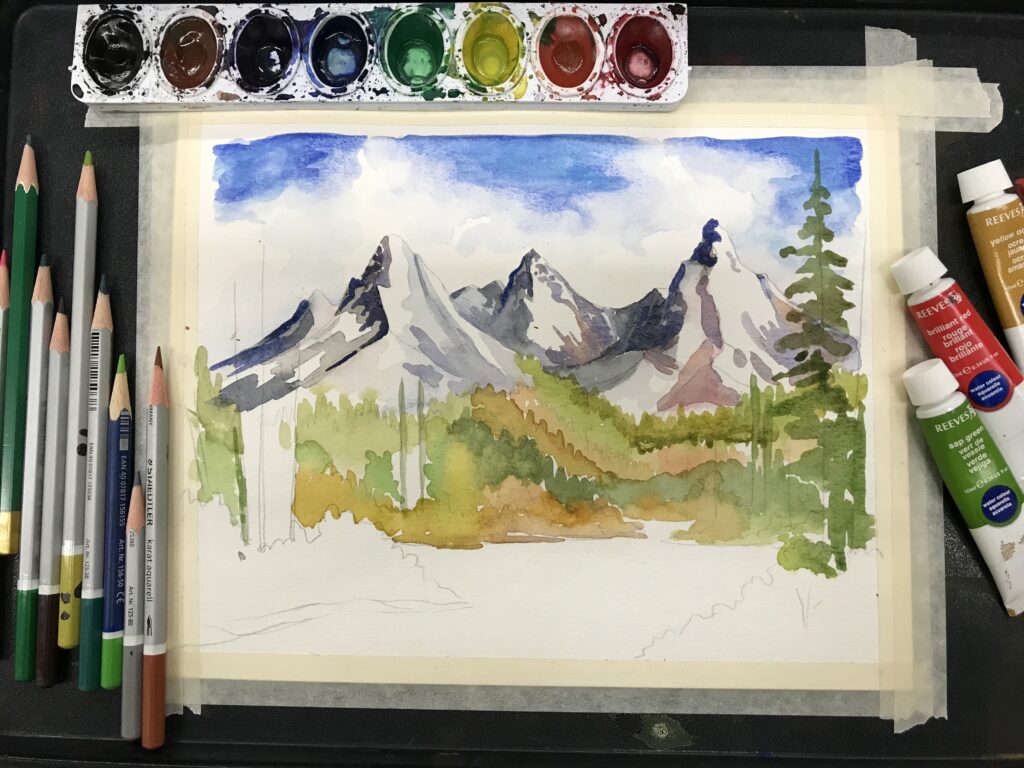
3. Allow kids to experiment and explore.
Some mediums just lend themselves to experimentation and exploration, and watercolor is undoubtedly one of those mediums. It sometimes seems to have a mind of its own; the more you work with it, however, the more comfortable you become with its tendencies and how you can use those to your advantage. For that reason, it can really help your kids to go through a lot of practice repetitions without a lot of pressure–the more experience they have, the more confident they will be. The best way to build confidence is by giving kids more chances to paint.
4. Bring In Smaller Projects (and More Opportunities)
Slusarski believes quantity, not quality, can help kids improve their skill with watercolors. She laid out her plan like this: “I cut a ton of 6 x 9-inch papers and tell students to have at it. Because I find students work at such different watercolor paces, I open this project up for kids to paint as many or as few paintings as they want in our time frame.”
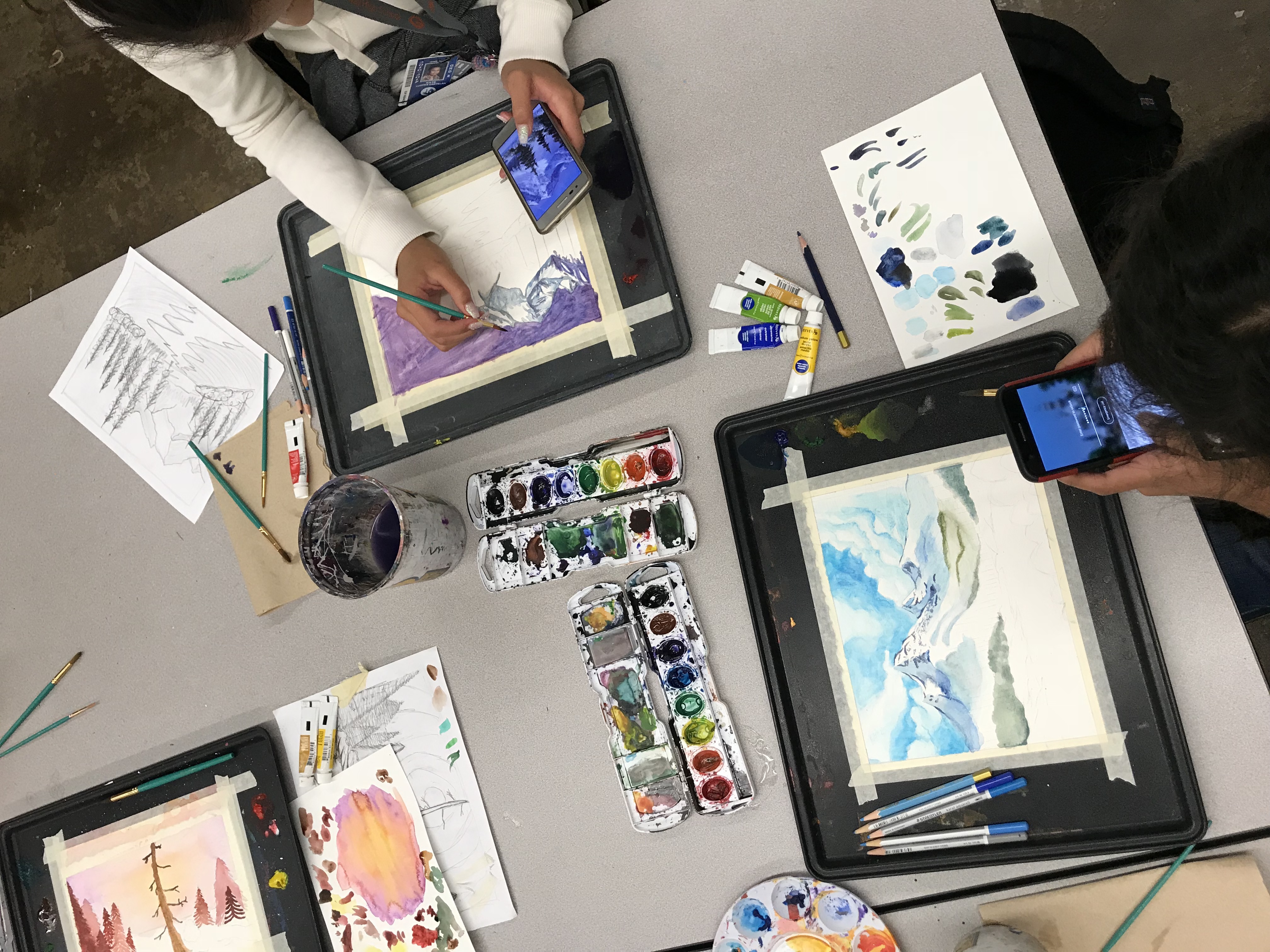
Throughout that time frame, she moves around the room to help her kids by critiquing, reteaching techniques, and emphasizing points of interest. Those opportunities to connect techniques and actual paintings are invaluable when it comes to improving their painting skills.
5. Do Something Special to Make it Enjoyable
This is maybe Andrea’s best idea: “This year, I wanted to add more to my landscapes. I also wanted to spice them up a bit, so I created “Landscape Element” days. Each day I demonstrated and discussed how to create various elements of landscapes using watercolors; clouds, trees, plants, grasses, rocks, etc. I turned it into a contest of who could paint the truest to real life – Bob Ross painting using watercolors. Winners get their very own Bob Ross official socks, and the competition is hot in my classroom.”

And here is where I think Andrea is on to something: Students already practiced those elements. They know what techniques to use, as well as how to mix the various colors and values–they have already practiced them individually. Their final work is being able to piece all of those elements and techniques together in one final painting.
Whether you struggle with watercolors, begrudgingly teach them, or love them like no other, hopefully, these ideas will help you improve how you use them in your classroom. Having the right mindset, encouraging students, and allowing them to explore the medium will lead to engagement and some exciting results!
If you liked Andrea’s advice here, you will love learning even more from her in her two Art Ed PRO packs about watercolor.
(P.S. Don’t forget you can ask your administrator to purchase PRO for your school!)
How do you feel about teaching watercolor?
What is your favorite watercolor lesson?
Magazine articles and podcasts are opinions of professional education contributors and do not necessarily represent the position of the Art of Education University (AOEU) or its academic offerings. Contributors use terms in the way they are most often talked about in the scope of their educational experiences.
